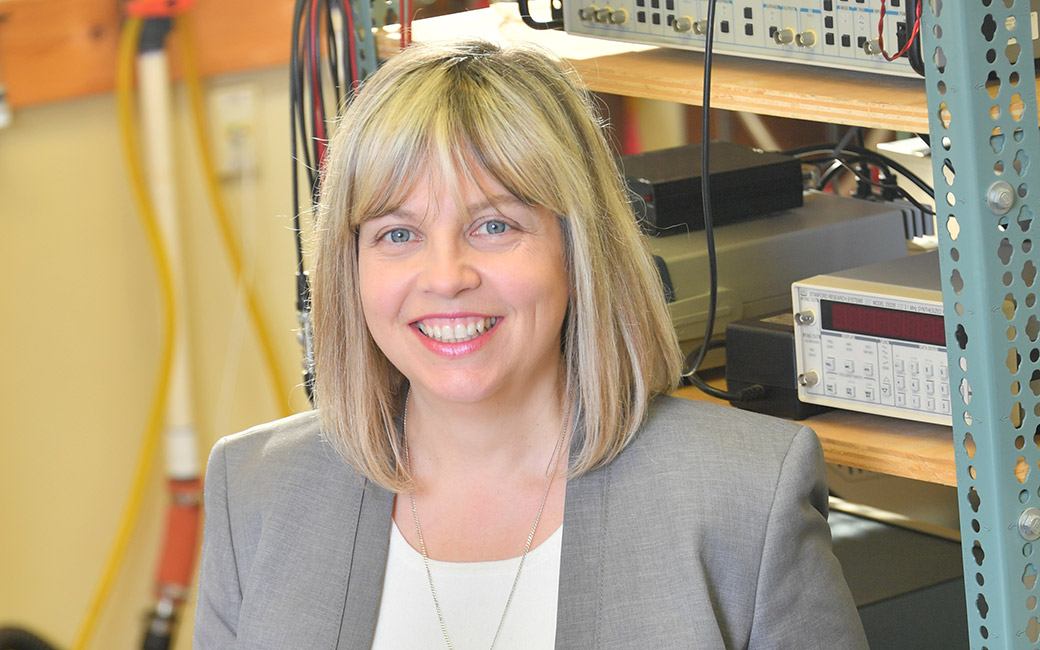Helping students visualize the invisible
Professor, Department of Physics, Astronomy and Geosciences

Science fiction—and Harry Potter—abound with mentions of invisibility cloaks, but is it really possible?
Towson University physics professor Vera Smolyaninova has been working on developing invisibility cloaking for 10 years, and the research continues to intrigue her.
“Metamaterials and transformation optics are probably the most exciting recent developments in the field of optics and electromagnetic theory,” she said. “They are built on very interesting similarities with such gravitational phenomena as black holes and wormholes. Scientific ‘invisibility cloaks’—enabled by transformation optics—have curious analogues in literature and fairy tales.
“This area is very stimulating and can be applied to other different branches of physics. For example, we have found new applications of electromagnetic metamaterials in superconductivity research, which is one of the topics of my current research.”
Smolyaninova possesses a U.S. patent for an electromagnetic cloaking technology and has extended her work to acoustics. One of her recent papers describes an ultra-light, ultra-thin acoustic cloak, which may potentially prevent traumatic brain injuries resulting from shock waves.
Smolyaninova and her students are working on an Office of Naval Research (ONR)-funded project and a TU-funded project presently. She includes her students in real, hands-on work to prepare them for their own careers after graduation, regardless of whether their paths will include scientific research.
“In my lab students perform different tasks: they design and assemble scientific apparatus, fabricate samples, write apparatus control and data acquisition computer programs, perform different types of measurements, analyze data, and prepare their presentations. It is impossible to imagine my research without my students in the lab,” Smolyaninova stressed. “I have an excellent team of students working in my lab now: William Korzi, Jonathon Cartelli and Kent Hess.”
Over the years, she has co-authored more than 70 national or international conference papers or presentations with undergraduate students, and three publications co-authored by students have generated attention from outlets like BBC News, Physics World, EurekAlert! (AAAS), MIT Technology Review, ExtremeTech and The Economist.
“Not all my students will continue to do scientific research in their future jobs,” she said. “Nevertheless, the scientific method and critical thinking skills, which they learned to employ during their research experience, will be invaluable in their chosen careers.”
Smolyaninova also works with K–12 students to generate interest in science. She organizes field trips to TU for high school students, STEM days with elementary school students and provides teachers with methodology and materials for future lessons.
But as for realizing a real invisibility cloak, don’t count on having your own Deathly Hallow any time soon.